If you don’t think of food when you hear the words “New Orleans,” you clearly haven’t spent enough time in the Crescent City. This city is a mecca for five-star chefs, gourmands, food bloggers, creative restaurateurs and pretty much anyone who likes eating. And because New Orleans has a unique history with French, Spanish, Creole and African roots, the city’s food landscape has strong influences by many ethnicities.
So what makes a food an only-in-New-Orleans food? We decided to go with foods that either originated in the city or just taste better while being enjoyed in the French Quarter or on a park bench in City Park. I want to preface this article with the fact that we avoided big categories of food since the list of Creole, Cajun and French dishes are endless and I have a word count. So, even though majorly beloved dishes like gumbo, jambalaya, red beans and rice and boudin scream New Orleans, we focused on foods outside of those categories. Hands down, there are so many additional tasty dishes that represent New Orleans well and the best way to experience them all is take a big bite out of the Big Easy (get it?!).
Beignets
Fried dough covered in powdered sugar is our idea of culinary heaven, so beignets must be little square angels here on Earth. These pillowy delicacies are good for breakfast, lunch and — my favorite — late-night, after-bar, midnight snack. They’re great with milk, chocolate milk and, of course, another regional favorite: chicory coffee (see below). In New Orleans, an order comes with three naked beignets, upon which the customer gets to cover his or her doughnut (and companions) with as much or as little powdered sugar as they want. Just make sure not to exhale too strongly or your tablemates will be wearing more sugar than eating it.
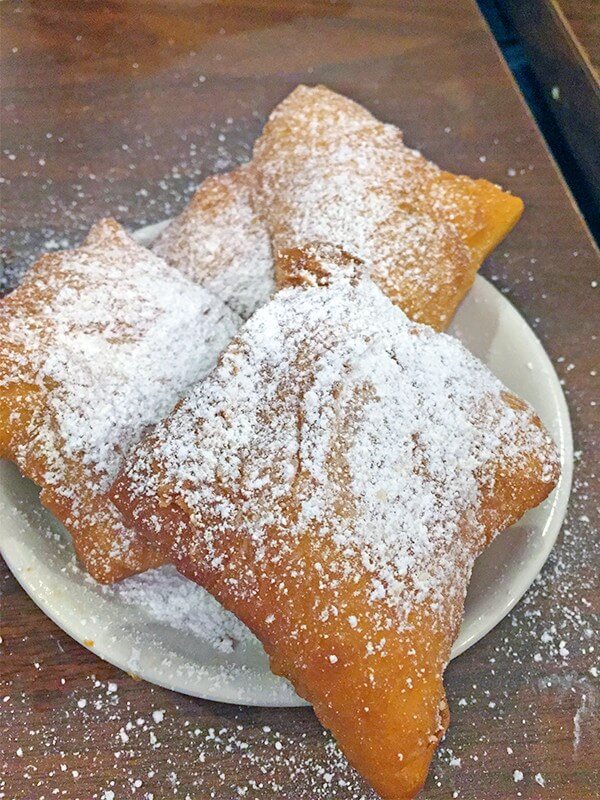
Sno-ball
Regardless of how you spell it, sno-balls are a supremely New Orleans-only food. Sure, you can get an ICEE, snow cone or Hawaiian shaved ice in almost any city but the “sno-ball” is an icy treat most popular in Louisiana. It’s not just the “snow” — soft, fluffy, shaved ice — that truly makes this a NOLA specialty; it’s the way they’re flavored. Syrups like nectar, wedding cake, cotton candy and many, many more add the sweetness, as well as variations like being “stuffed” (filled with ice cream) and topped (with options like condensed milk, marshmallow, etc.). There are a ton of great places to get a heaping sno-ball; just keep in mind that hours change somewhat drastically throughout the year (especially in the colder months).

Praline
Thought to have originated back in 17th century France and eventually making their way to Louisiana, these candy discs are now made with sugar, butter, cream and, of course, locally grown pecans. Pronounced “prah-leen,” these confections are available everywhere in the city and make great presents if you’re just visiting historic New Orleans (that is, if they survive the flight and your hyperactive sweet tooth).
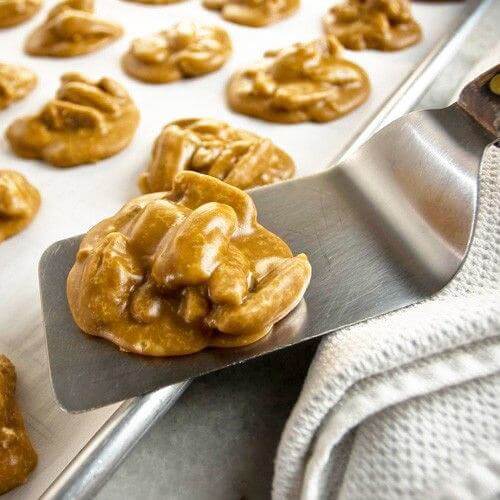
Po’ boy
You may call it a “sandwich,” but New Orleanians love themselves a crusty, flaky po’ boy (also “po-boy” and “po boy”). These giant subs can be stuffed with fried shrimp, roast beef, crawfish or even something that may be served as a side dish somewhere else (hello French fries). Once you figure out what you want inside your po’ boy, then you need to decide if you’d like it “dressed” or not — usually consisting of lettuce, tomatoes, pickles and mayonnaise. If you go the beefy route, you NEED to get a “debris” one, though it’s far from anything you’d want to throw out like its namesake implies; debris is the shredded beef that gets soft and full of flavor from being rendered in the juices and fat, usually served with gravy.

King cake
Mardi Gras is to New Orleans as oxygen is to survival — the two just need each other. And though this holiday is more widely known for the alcohol streaming throughout the parade routes and French Quarter, there’s another Mardi Gras treat that’s too delicious to pass up. King cake, like a huge danish ring covered in sprinkles of the traditional holiday colors (purple, green and gold) and sometimes stuffed with fillings like cream cheese and fruit. Added bonus? You get a baby! That’s right, each cake has a tiny baby inside (relax, it’s plastic), in honor of Christianity’s “Epiphany,” where Jesus showed himself to the three wisemen. But heads up — the tradition is that whomever gets the slice with the baby is responsible for bringing next year’s king cake. Early January kicks off king cake season but you usually can find versions of these sweet morsels in late fall, as well.
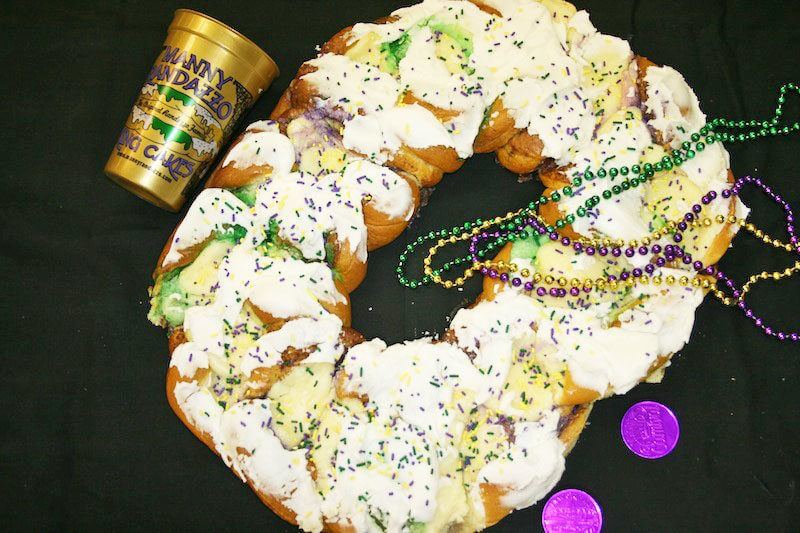
Hurricane
Unfortunately, New Orleans has hurricanes; fortunately, New Orleans also has hurricanes. We’re not fans of the weather systems like Katrina (and I speak from experience, as I was one of the thousands who evacuated the city when I lived there) but we do love the hurricanes that come in huge glasses, with lots of rum, two straws and the ability to subversively have you hammered before you’ve even drank half. Almost every bar in the French Quarter offers this fruity cocktail and places like Pat O’ Brien’s will even let you keep your glass as a souvenir/proof of your wild night out in the Big Easy.
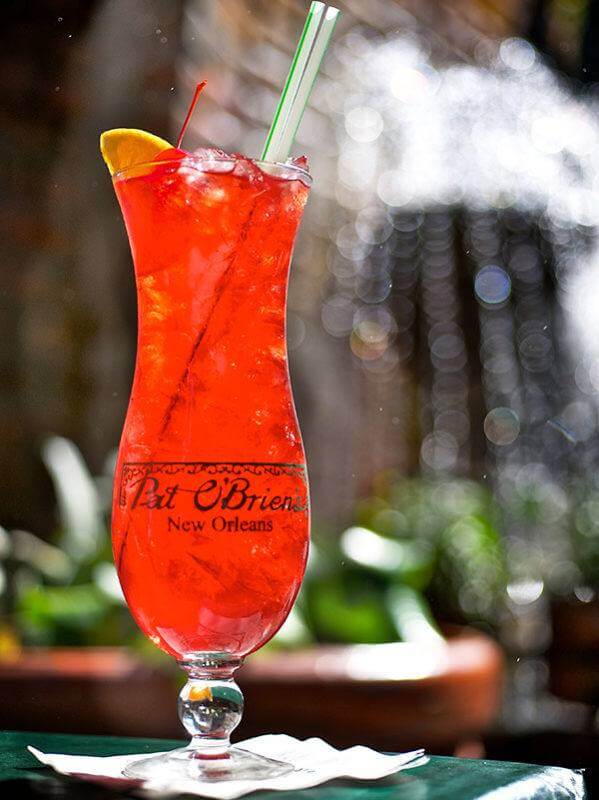
Chicory coffee
Many of the foods in this NOLA article originated somewhere else, mostly France. And when these culinary traditions and ingredients made their way to the French colonies, like Louisiana, the practices stuck — chicory coffee is one such example. Historically, the French roasted the chicory plant root with their coffee to stretch the supply, as the former had a similar taste. And though the global market now has more than enough coffee, some habits are hard to break, especially when the taste, as in the coffee and chicory combo, is so good. Many coffeehouses like famed Café Du Monde serve the hot beverage “au lait” (mixed half with hot milk) but you can also buy cans of the drink (caffeinated and decaffeinated) online, as well. Make sure to dunk one or four beignets in your morning brew to get your day started right!
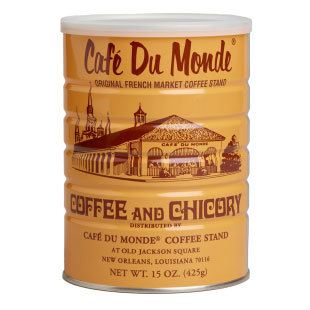
RELATED: Not Going to New Orleans? Eat Like You Are!
Crawfish and oysters
OK, before you jump on my back screaming, “You can get oysters way outside of New Orleans,” just keep in mind that these are foods that New Orleans has honed, perfected and serves to residents and visitors alike every day. The two standout oyster dishes that scream New Orleans are Oysters Rockefeller (invented at heavyweight Antoine’s Restaurant, so named for the richness of the sauce) and charbroiled oysters (oysters covered in garlic, butter, herbs and cheese, and grilled to perfection).
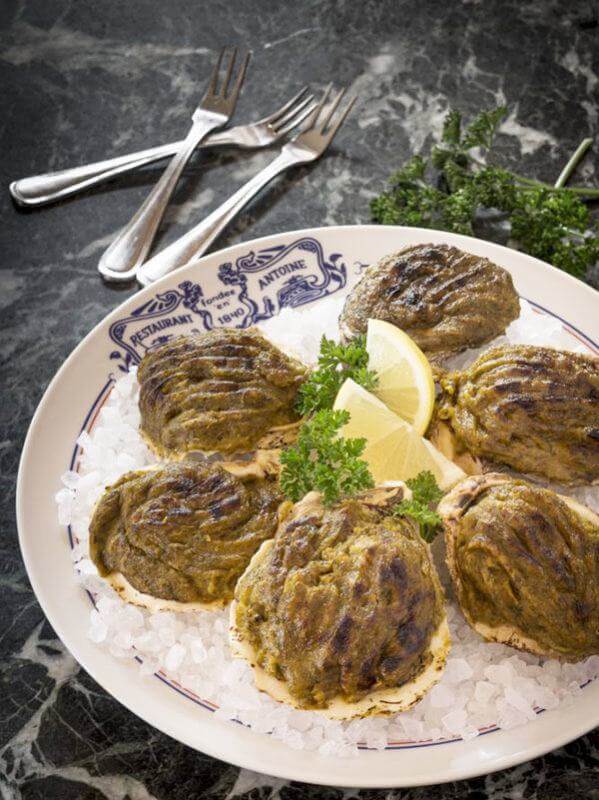
And if you think there’s just one or two ways to enjoy crawfish, you’ve clearly never been to New Orleans during crawfish season. Just as Forrest Gump’s Bubba explained about shrimp, crawfish can be prepared a hell of a lot of ways. Besides the always reliable boiled crawfish, you can try crawfish pie, crawfish bread, crawfish Étouffée, crawfish remoulade, crawfish sack, crawfish strudel, crawfish Monica, crawfish bisque and many more. Since we don’t have the word count to explain all of these, just do some research online and figure out which delicacy is calling your crawfish cravings.
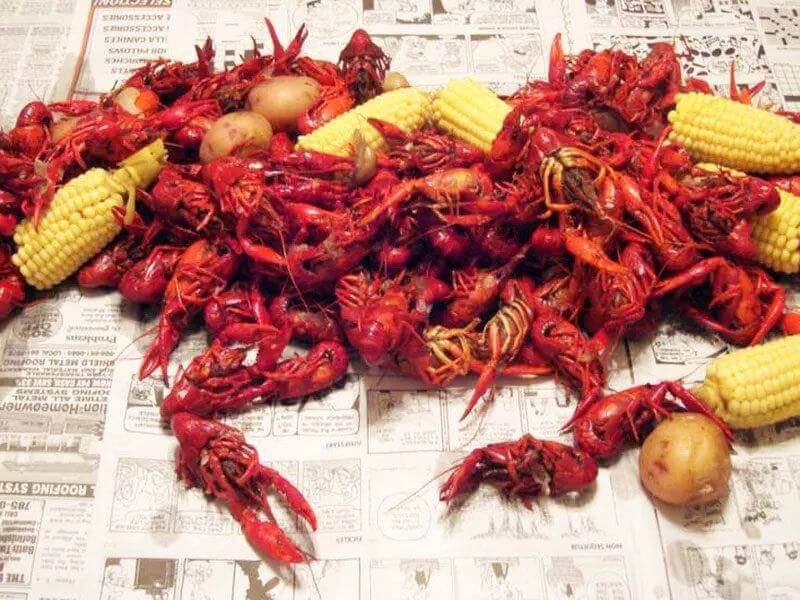
Muffuletta
Besides po’ boys, the other New Orleanian go-to sandwich is the muffuletta. This meaty sandwich comes on a giant, round, sesame bun and is traditionally stuffed with salami, ham, mortadella, provolone, mozzarella and the signature olive salad (featuring marinated green and black olives with other veggies). This cold, Italian smorgasbord has seen a few variations over the years, including seafood and vegetarian versions. Just be ready to share this massive sandwich with a few of your buddies, as the surface area and volume of this beast is way too much for just one diner.
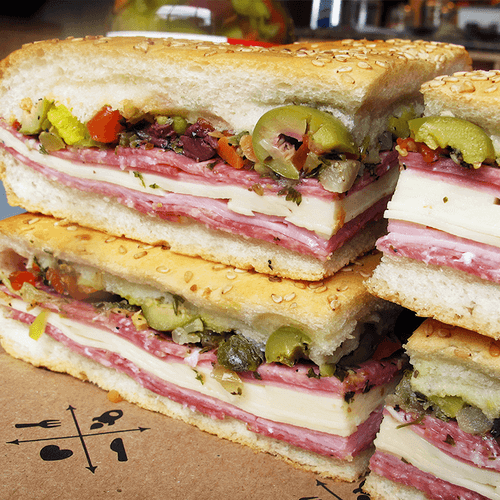
Douberge
Cake is good; layers upon layers upon layers of cake are better. Pronounced “dough-bash,” this layered cake is a traditional hit for birthdays, hostess gifts and just any time you’re in need of a lot of sugar. The cake can come in five, six, eight or even more layers of springy butter cake (in various flavors) divided by custard, chocolate pudding, lemon curd or even ganache. Since New Orleans was and is so hot and humid, the historical significance of douberge was that the recipe called for these lighter fillings instead of the heavier, weightier buttercream.
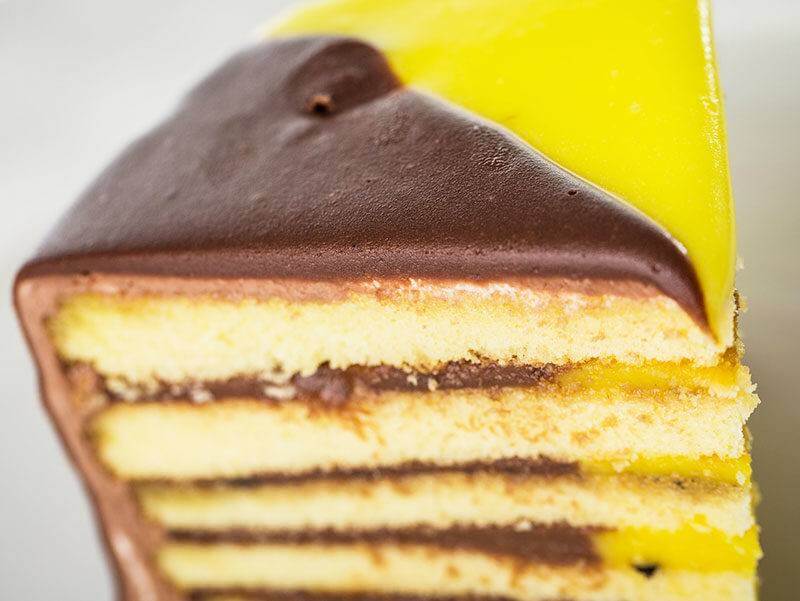
Other NOLA foods we didn’t have time/space to cover but are truly worth sharing: turtle soup, bananas foster, cherries jubilee, gumbo, Étouffée, jambalaya, drive-thru daiquiri, alligator pie/sausage, catfish meuniere, maque choux, creole stuffed crab, red beans and rice, catfish almondine, boudin, mango freeze, Ya-ka-mein, meat pie, bread pudding, Sazerac, Hubig’s Pies, couche-couche … must we keep going?
**********
Alright, who’s ready to eat?! Take a look at some of our food articles that are sure to make you drool!


















